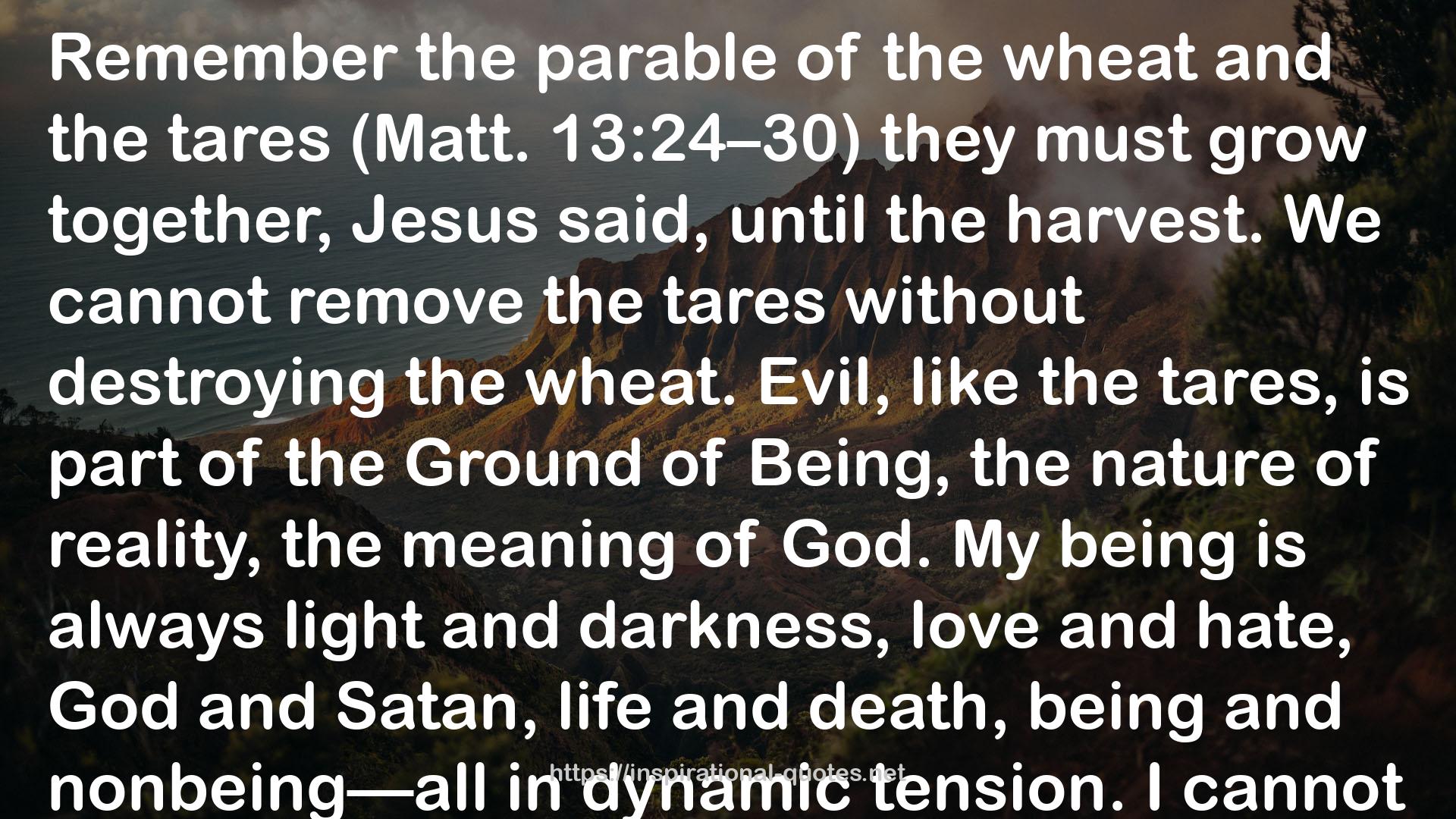" Remember the parable of the wheat and the tares (Matt. 13:24–30) they must grow together, Jesus said, until the harvest. We cannot remove the tares without destroying the wheat. Evil, like the tares, is part of the Ground of Being, the nature of reality, the meaning of God. My being is always light and darkness, love and hate, God and Satan, life and death, being and nonbeing—all in dynamic tension. I cannot split off part of who I am, confess it, be absolved of it, and seek to try again. I cannot pretend that I am made in God’s image until I own as part of my being the shadow side of my life, which reflects the shadow side of God. That is why evil is always present in the holy; that is why evil is perceived as relentless and inescapable; that is why Jesus and Judas have been symbolically bound together since the dawn of time. The Johannine myth was not wrong in suggesting that Jesus was the preexisting word of God who was enfleshed into human history. That is a very accurate conception of an ultimate truth. But it is not complete. Judas Iscariot was also mythically present in God at the dawn of creation, and he too was enfleshed in the drama played out in Judea in the first century. The mythical themes are woven together time after time. God and Satan, life and death, good and evil, sacrifice and freedom, light and darkness, Jesus and Judas—are all inextricably bound up with one another. I cannot finally step into the new being without bringing my own dark shadow with me. "
― John Shelby Spong , A New Christianity for a New World: Why Traditional Faith is Dying How a New Faith is Being Born
